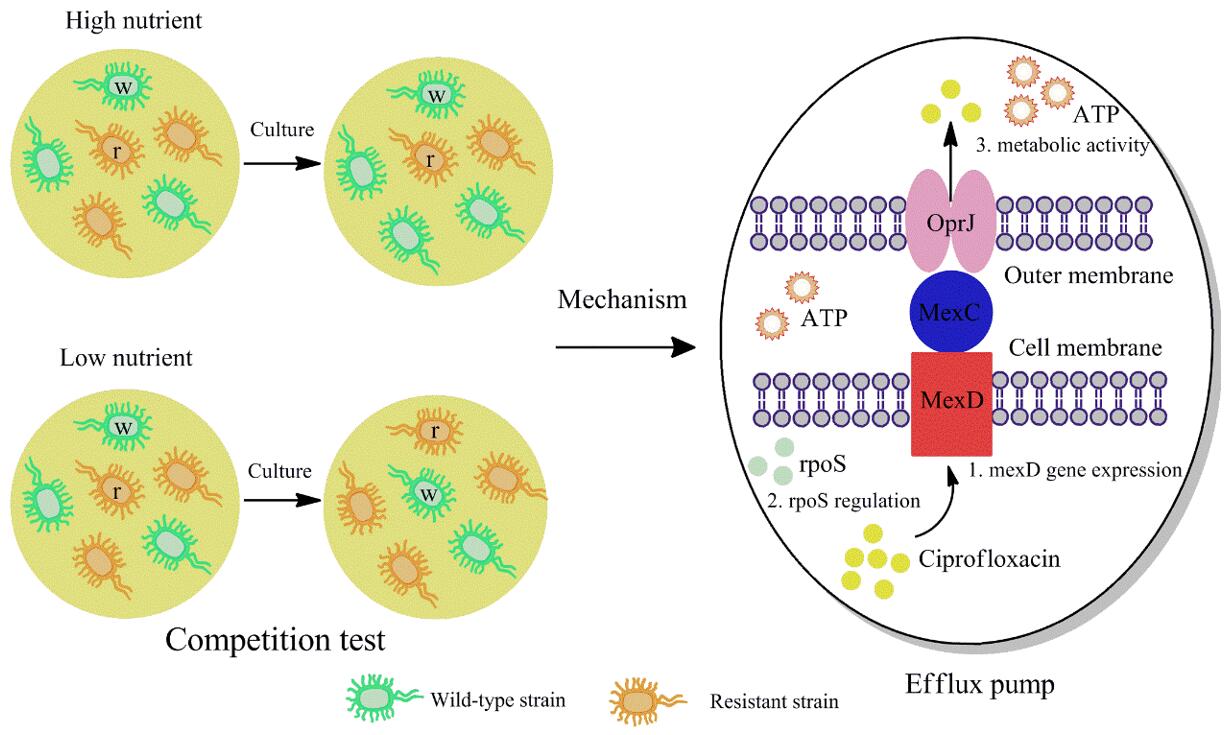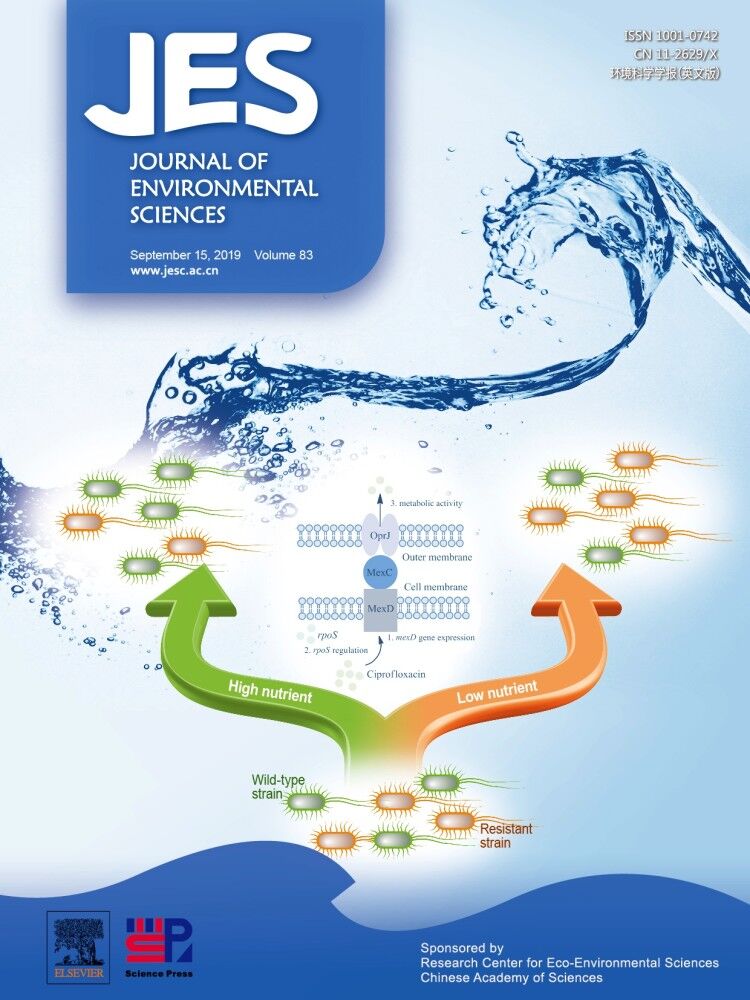A team led by Prof. Yu Xin in the Institute of Urban Environment, Chinese Academy of Sciences, found that low nutrient level, as the key environmental factor in drinking water system, can reduce the fitness cost of efflux pump mediated ciprofloxacin resistance in Pseudomonas aeruginosa, thus affecting the persistence of antibiotic resistance in this circumstance.
The long-term persistence of antibiotic resistance in the environment, especially in drinking water, is a public health concern. Generally, bacterial antibiotic resistance is achieved through four main mechanisms: a reduction in outer membrane, enzymatic inactivation, target alterations, and active efflux of antibiotics. Among these, rapid efflux of antibiotics from cells is thought to play a key role in the intrinsic resistance of clinically important bacteria, and usually confers a fitness cost in bacteria.
In this work, the important opportunistic pathogen and extensively used model microorganism Pseudomonas aeruginosa and its MexCD-OprJ efflux pump were focused. The effect of the environmental availability of nutrients (as low as 0.5 and 0.05 mg/L TOC) on the fitness cost of bacterial antibiotic resistance conferred by overexpression of efflux pumps was investigated.
Competition experiments between wild-type Pseudomonas aeruginosa and ciprofloxacin-resistant mutants revealed that the fitness cost of ciprofloxacin resistance significantly decreased (p < 0.05) under low-nutrient (0.5 mg/L total organic carbon (TOC)) relative to high-nutrient (500 mg/L TOC) conditions.
Mechanisms underlying this fitness cost were analyzed. The mexD gene expression in resistant bacteria (cip_3 strain) was significantly lower (p < 0.05) in low-nutrient conditions, with 10 mg/L TOC ((8.01 ± 0.82)-fold), than in high-nutrient conditions, with 500 mg/L TOC ((48.89 ± 4.16)-fold). Moreover, rpoS gene expression in resistant bacteria ((1.36 ± 0.13)-fold) was significantly lower (p < 0.05) than that in the wild-type strain ((2.78 ± 0.29)-fold) under low-nutrient conditions (10 mg/L TOC), suggesting a growth advantage. Furthermore, the difference in metabolic activity between the two competing strains was significantly smaller (p < 0.05) in low-nutrient conditions (5 and 0.5 mg/L TOC).
This work suggest that nutrient levels are a key factor in determining the persistence of antibiotic resistance conferred by efflux pumps in the natural environment with trace amounts or no antibiotics.
The study, published in Journal of Environmental Sciences - CHINA, was supported by the by the National Natural Science Foundation of China (Nos. 51708534, 51678551, and 51478450), the National Key Research and Development Program of China-International collaborative project from the Ministry of Science and Technology (No. 2017YFE0107300), the Xiamen Major Science and Technology Project (No. 3502Z20171003), and K.C. Wong Education Foundation.

Diagram of competition test and mechanism analysis (Image by Lin Wenfang)

Cover of JES Journal No.83